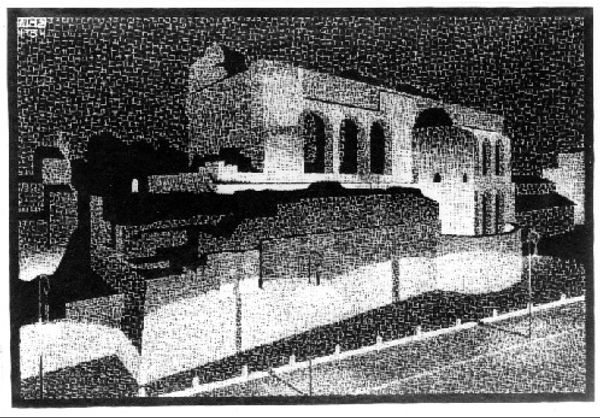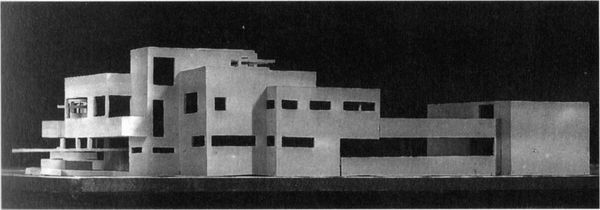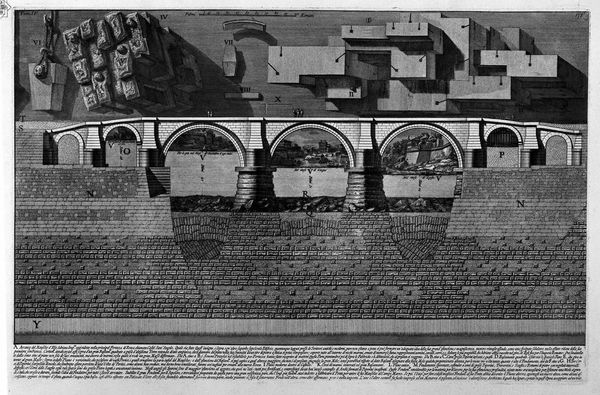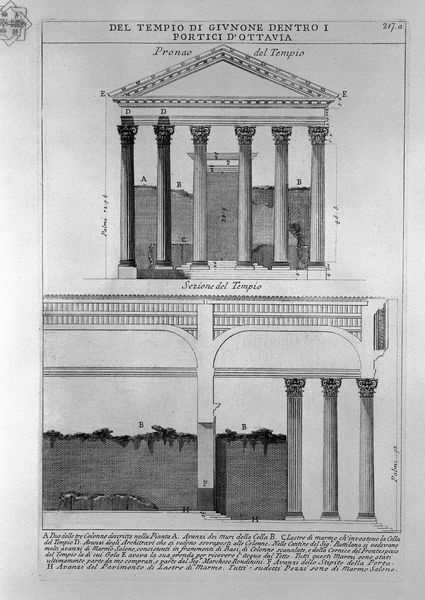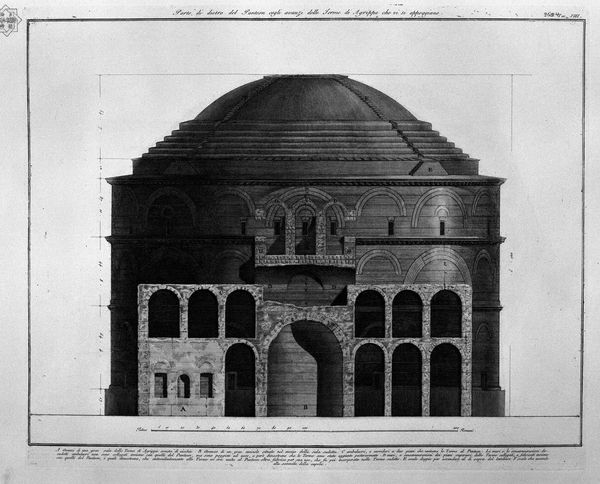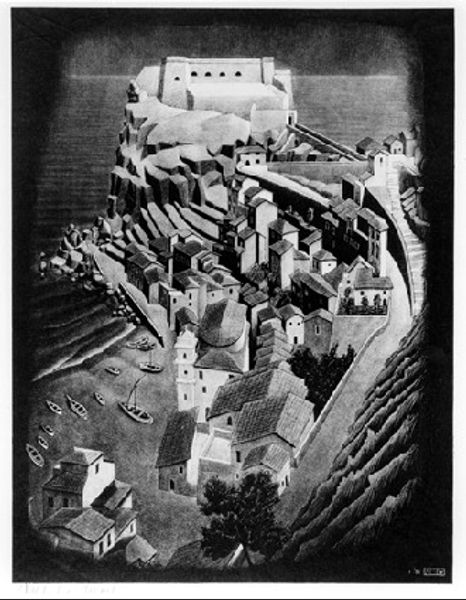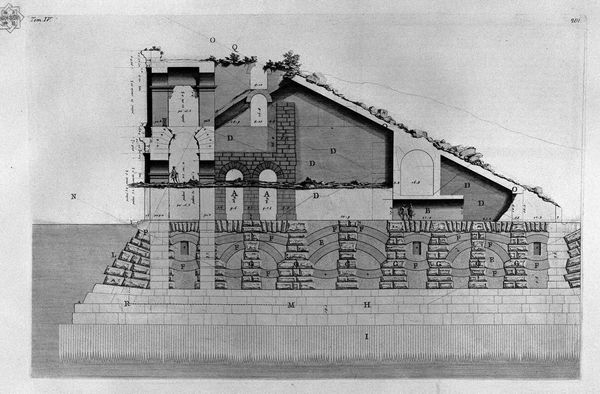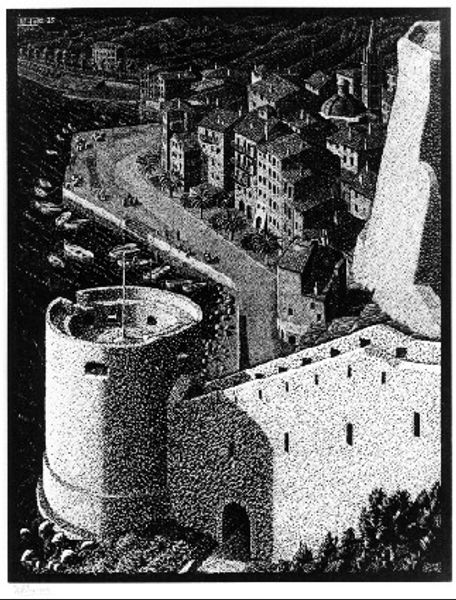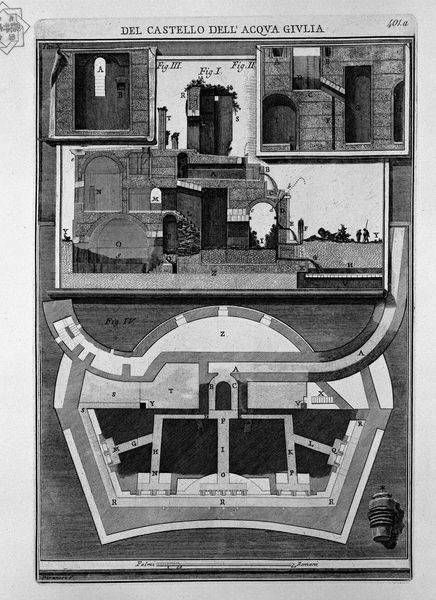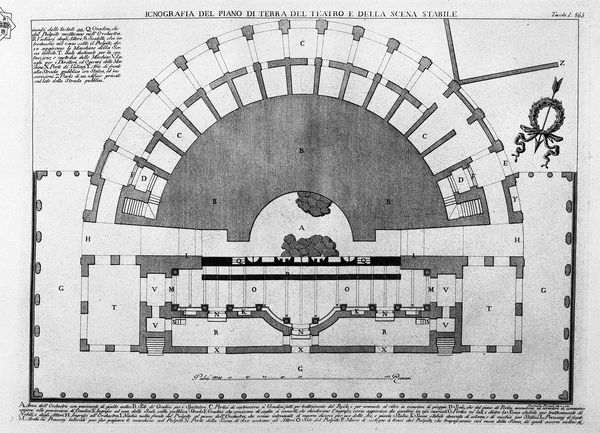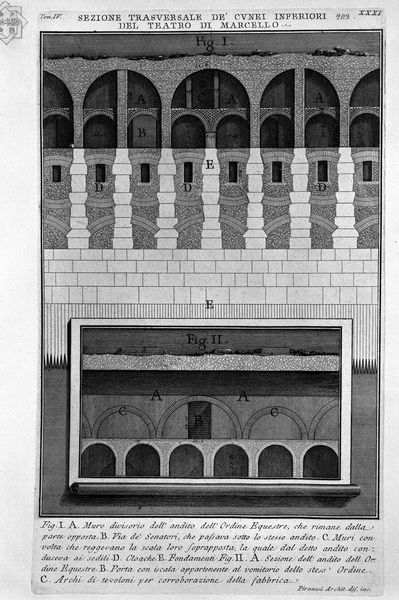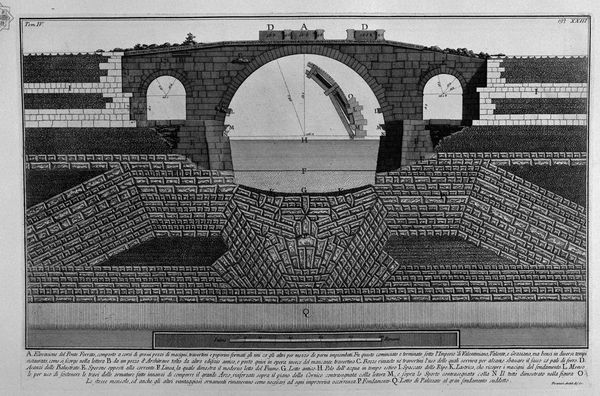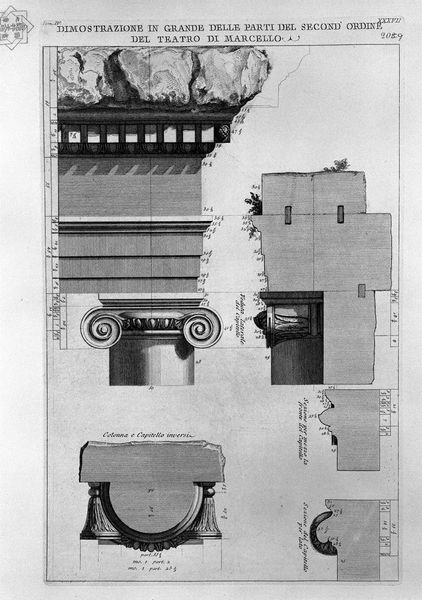
Copyright: M.C. Escher,Fair Use
Curator: Oh, it gives me the shivers—a beautiful shiver, like standing in a vast, echoing space where time bends back on itself. There's a kind of haunted quality to this vision of Rome... Editor: Indeed. What we are observing is M.C. Escher’s lithograph "Nocturnal Rome, Castel Sant' Angelo," completed in 1934. Immediately noticeable is the methodical approach in illustrating the details with a kind of geometric hatching that is very precise. Curator: The hatching is incredibly hypnotic, isn’t it? It's like a veil both revealing and concealing. What's so fascinating is the choice of Rome—a city so steeped in history, almost like he’s using that lattice-work to map out the layers of memory embedded in the stones. I see geometries not just in the rendering but within the architecture itself: spheres, cylinders and a repetition of arches all set against a flat background. Editor: Precisely. His methodical hatching emphasizes the physical processes of printmaking. Lithography allows for that amazing texture – the grit, the slight imperfections… These are not grand artistic gestures, but the accumulation of many micro-decisions made manifest through a repetitive process. It invites considerations about how artistic value can be linked to industrial forms. Curator: Absolutely! It feels industrial and artisanal, existing in a state between mechanical production and free expression, but where would it sit without light and shadow? It isn't necessarily about grand vistas or overt emotional statements; instead, he coaxes out this quiet melancholy. Perhaps, too, that sense of history and place is felt in the knowledge of Escher's dedication to observing real spaces as his original source materials. It transforms place to somewhere slightly abstracted—somewhere you remember more than somewhere you know. Editor: Right. The final piece emphasizes its constructed nature; every single mark feels deliberate in its deployment and highlights Escher's craftsmanship in mastering print techniques. We see the city presented to us as this monument to labor, made not only by architects and builders of old, but by Escher's own contemporary hands. Curator: Well, now I am thinking of time, labor and beauty - all existing inside of these geometric Roman boundaries. How brilliant is that? Editor: It provides insight into our appreciation of the blend between method and craft. I suppose, thank you, Escher.
Comments
No comments
Be the first to comment and join the conversation on the ultimate creative platform.
